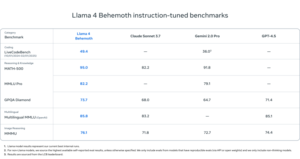Permission Not Granted

Understanding AI Rivalry: China’s Manus AI vs. OpenAI and Anthropic
As the realm of artificial intelligence (AI) continues to evolve rapidly, a notable competition has emerged among major players like China’s Manus, OpenAI, and Anthropic. These organizations are striving to push the boundaries of AI technology, each contributing to the innovation landscape in unique ways. This article explores the distinctions and contributions of these key players in the AI field.
H-2: A Look at Manus AI
H-3: Overview of Manus AI
Manus AI, based in China, is gaining prominence in the global AI arena. The organization focuses on creating advanced AI models that can integrate seamlessly with various applications, from natural language processing (NLP) to machine learning. Their emphasis on the Chinese language and cultural nuances sets them apart in a market where English-language models have traditionally dominated.
H-3: Key Features and Innovations
- Language Proficiency: Manus AI specializes in understanding and generating human-like Chinese text, making it particularly valuable for businesses and individuals operating within the Chinese market.
- Multimodal Capabilities: Manus is developing models that manage various data types, including text, images, and audio, enhancing their AI’s versatility.
- Local Focus: By prioritizing local needs and user experience, Manus AI aims to provide tailored solutions that resonate with Chinese users.
H-2: OpenAI’s Impact on the AI Landscape
H-3: Introduction to OpenAI
OpenAI has built a reputation as a leader in the field of artificial intelligence since its inception. Known for products like ChatGPT, OpenAI leverages cutting-edge research to produce models that can perform a wide range of tasks across multiple languages and disciplines.
H-3: Notable Contributions
- Transformative Models: OpenAI’s models have set new standards in language understanding and generation. The GPT series is particularly noted for its ability to create coherent and contextually relevant text.
- Research and Safety: OpenAI is committed to ensuring that AI technology is safe and beneficial. Their work involves rigorous testing and ethical considerations to prevent misuse.
- Community Engagement: OpenAI promotes collaboration with researchers and developers worldwide, fostering an environment that encourages innovation and shared knowledge.
H-2: Anthropic’s Unique Approach
H-3: Introduction to Anthropic
Anthropic is a relatively new entrant in the AI space but has quickly gained attention for its focus on AI safety and alignment. Founded by former OpenAI employees, Anthropic’s mission is to develop responsible AI that prioritizes human values.
H-3: Key Aspects of Anthropic
- AI Alignment: Anthropic is dedicated to ensuring that AI systems’ goals align with human intentions, minimizing risks associated with AI deployment.
- Research-Focused: The company invests heavily in foundational research, exploring new methodologies to create safer and more reliable AI systems.
- Transparency: Anthropic emphasizes open communication about AI risks and encourages discussions around responsible AI innovation, positioning itself as a thought leader in ethical AI practices.
H-2: Comparative Analysis
H-3: Market Positioning
- Target Audience: Manus AI serves the Chinese market predominantly, catering to local businesses and applications. In contrast, OpenAI and Anthropic have a more global approach, targeting diverse users across various sectors.
- Technological Focus: While Manus leans toward linguistic and cultural adaptation, OpenAI and Anthropic emphasize versatility and safety as foundational aspects of their models.
H-3: Future Directions
As AI technology evolves, the competition between Manus, OpenAI, and Anthropic is expected to shape the next generation of AI models. Innovations in safety, ethical considerations, and localization will drive the development strategies of these organizations. With ongoing advancements, the future promises even more sophisticated and capable AI systems that serve a wide array of applications worldwide.
By examining these three key players, we gain valuable insights into the current landscape of AI technology and its trajectory. Each organization’s unique focus contributes significantly to the overall progress and diversity of solutions available in the realm of artificial intelligence.





